Overview: A 7-Day Luxury Journey Through Nepal’s Cultural Gems and Himalayan Views
Let’s be honest—most people think “Nepal” and picture cold tents, muddy boots, and endless uphill climbs. But that’s not this. The Nepal in Luxury – 7-Day Grand Himalayan Journey is the version where you still get the Himalayas, still get the ancient temples and those ridiculous sunrise views—but without freezing your face off or sacrificing actual sleep. This is a one-week, comfort-first itinerary through Kathmandu, Pokhara, and Dhulikhel, and it’s been built for people who want Nepal’s magic without needing to “rough it” every step of the way. You’re sleeping in boutique hotels, taking short scenic flights, and still soaking in every snow-capped peak and centuries-old stupa that makes this country what it is. It’s calm. It’s curated. And yes, it’s still 100% Nepal.
Look, this 7-day luxury Nepal tour isn’t your average postcard chase where you spend half your day sweating uphill or battling altitude sickness. You start in Kathmandu, where the city’s noise and colors hit you like a wave but in a way that feels alive, not overwhelming. Then, you fly over to Pokhara — and suddenly it’s quiet, like the Himalayas are putting a gentle hand on your shoulder. Driving up to Sarangkot at 1,600 meters isn’t just some random stop — it’s where you catch a sunrise that’ll burn itself into your brain, with Annapurna and Dhaulagiri lit pink in the morning light. No endless hiking required, just pure, stunning mountain views that make you forget any travel hassle. The trails you do cover are easy on the feet and soul, perfect for those who want the Himalayas’ majesty without the usual pain. This trip balances cultural deep dives in Kathmandu and Bhaktapur with jaw-dropping natural beauty, all while keeping altitude sickness and rough terrain out of the picture. It’s the Himalayas, but dialed way down on the suffering and dialed way up on the experience.
Nature & Biodiversity on Nepal in Luxury – 7-Day Grand Himalayan Journey
Let’s be real – you’re not here just for the luxury lodges and hot showers (though, god knows they’re glorious after a day in the hills). You’re here because Nepal sneaks up on you. One minute you’re sipping espresso in Pokhara, the next you’re locking eyes with a mischievous langur monkey who’s definitely judging your hiking boots.
Pokhara’s Subtropical Playground
That first morning by Phewa Lake? Pure magic. The water’s so still it looks Photoshopped, with the Annapurnas doing their best "mirror selfie" impression. Keep your binoculars handy – those flashes of color in the trees aren’t just leaves. Crimson sunbirds dart around like living jewels, while the occasional kingfisher puts on a diving show that’d make Olympic judges weep. Pro tip: The lakeside fig trees are prime real estate for bird nerds – get there at dawn when the feathery crowd is most rowdy.
The Ascent to Sarangkot: Where the Forest Gets Fierce
As your private SUV climbs (because yes, we’re doing this the plush way), watch how the vegetation gets progressively more dramatic. Those tame-looking oak trees? Their branches are basically Airbnb for:
- Langurs with serious acrobatic skills
- Squirrels that could win American Ninja Warrior
- At least three types of woodpecker working as nature’s percussion section
But the real showstoppers are the rhododendrons. Come spring, these aren’t just flowers – they’re neon pink fireworks exploding across the hillsides. National flower? More like national diva.
Sarangkot’s High-Altitude Drama
Here’s where things get properly wild. That crisp morning air isn’t just refreshing – it’s literally thinner, and the plants know it. Delicate edelweiss cling to slopes where only the toughest survive. Scan the cliffs and you might spot Himalayan tahrs – imagine a goat crossed with a WWE wrestler, with hooves that laugh at gravity.
The real magic happens at sunrise. As the first light hits the Annapurnas, golden eagles ride the thermals like they own the place (which, let’s be honest, they do). It’s the kind of moment where you forget to breathe – and not just from the altitude.
The Luxury Twist
Here’s the beautiful part: You’ll experience all this raw wilderness, then retreat to lodges where your boots get cleaned and someone hands you a hot towel like you’re returning from Everest (even if you just did the nature walk version). The best of both worlds? Absolutely.
Don’t Miss:
- The "birding butler" experience at Temple Tree Resort (yes, it’s a thing)
- The secret orchid spot only your Naturalist Guide knows about
- That perfect moment when your champagne flute gets a mountain reflection
Because in Nepal, luxury isn’t about hiding from nature – it’s about having a front-row seat to the greatest show on earth, with a side of Himalayan hospitality.
Nepal in Luxury – 7-Day Grand Himalayan Journey: The Route Unpacked
This isn’t your average Himalayan hopscotch – it’s a carefully choreographed dance between Nepal’s greatest hits and its best-kept secrets, with zero backpacker grime and all the five-star flair. Buckle up !
Kathmandu: Where Ancient Gods Meet Modern Luxury
Your adventure kicks off in the gloriously chaotic capital, where prayer flags tangle with wifi signals. Two nights here let you temple-hop between UNESCO World Heritage Sites (that Durbar Square? Pure medieval Instagram bait) before retreating to your boutique hotel’s serene courtyard. Pro tip: The momo dumplings at your welcome dinner will ruin all other dumplings for life.
Pokhara: The Lake City That Spoils You Rotten
A quick flight (with mountain views that make economy class cry) lands you in Nepal’s adventure playground. Phewa Lake isn’t just pretty – it’s your personal mirror for Machhapuchhre’s fishtail peak. Your luxury resort here isn’t just a hotel; it’s a crash course in how to sip a G&T while watching paragliders dot the sky like confetti.
Sarangkot: The Million-Dollar Sunrise (Without the Crowds)
Forget those bleary-eyed trekkers who hiked up at 4AM – you’re rolling up in style for that iconic Annapurna panorama. At 1,600m, this viewpoint serves Himalayan peaks like a degustation menu, with the added bonus of your guide pointing out the hidden villages in the valleys below where morning smoke curls from chimneys.
Bhaktapur: The Living Museum You Can Actually Touch
Most itineraries rush back to Kathmandu – fools. Your final stop in this medieval Newari city is like walking into a 12th-century oil painting, only with better coffee. The brick alleyways hum with potters’ wheels turning, temple bells clanging, and the scent of wood-fired bread. Your farewell dinner? Hosted in a palace courtyard because standard restaurants are for amateurs.
Why This Route Wins
- Smart altitude play: No brutal climbs, just gradual reveals (your lungs will thank you)
- Private transfers: Because sharing vehicles with chickens isn’t your vibe
- Golden hour math: Sunrise at Sarangkot + sunset over Bhaktapur = photographer’s nirvana
- The perfect tempo: Urban energy → lakeside zen → mountain majesty → cultural immersion
Nepal in Luxury – 7-Day Grand Himalayan Journey: The Highlights
Forget cookie-cutter tours—this is Nepal served with a side of silk sheets and front-row seats to the Himalayas’ greatest shows. We’re talking sunrise views that’ll make your Instagram followers weep, secret cultural gems most travelers miss, and luxury so seamless you’ll forget you’re in the adventure capital of the world. Here’s what makes this journey unforgettable:
Top Highlights of Nepal’s Grand Himalayan Luxury Tour
- Kathmandu’s Living Heritage
Dive into the chaotic charm of Kathmandu’s UNESCO-listed Durbar Square, where ancient temples and bustling markets collide in a sensory overload (in the best way possible). - Pokhara’s Lakeside Magic
Wake up to mirror-like reflections of the Annapurna Range on Phewa Lake—Nepal’s most Instagrammable sunrise spot (with way better coffee than your average trekker’s tent). - Sarangkot’s Sunrise Spectacle
Watch the first golden light hit Machhapuchhre (Fish Tail Peak) from the 1,600m viewpoint of Sarangkot—no predawn hike required (your private SUV handles the climb). - Bhaktapur’s Timeless Alleys
Lose yourself in Bhaktapur’s medieval streets, where potters, woodcarvers, and spice vendors keep centuries-old traditions alive (and the local juju dhau yogurt is a must-try). - Luxury Lodging with Mountain Views
Swap teahouses for boutique hotels where your bathtub faces the Himalayas, and someone brings you masala tea before you even ask. - Private Everest & Annapurna Scenic Flight
Soar above the world’s highest peaks on a VIP-window-seat flight—no hiking required for these bragging rights. - Newari Feast in a Palace Courtyard
Dine like royalty in Bhaktapur’s hidden heritage courtyards, where traditional flavors meet white-glove service. - Exclusive Cultural Encounters
Meet local artisans, from thangka painters to Tibetan singing bowl masters, in intimate workshops most tourists never see. - No Backpacker Crowds
Skip the overrun trails and experience Nepal’s beauty in private comfort—your only "roommates" are the snow peaks outside your window. - Seamless Private Transfers
No bumpy buses or haggling with taxis—just smooth rides in luxury SUVs with guides who know every shortcut. - Bird’s-Eye Himalayan Panoramas
From Pokhara’s lakeside to Sarangkot’s summit, every vantage point is handpicked for maximum wow factor (and minimal effort). - The Perfect Blend of Adventure & Ease
Get the thrill of the Himalayas without the trekking blisters—this is high-altitude beauty served on a silver platter.
When to Go: The Best (and Worst) Times for Nepal’s Grand Himalayan Luxury Journey
Let’s cut through the vague advice—you don’t just want "good weather," you want golden-hour mountain views, crisp air, and zero monsoon mudslides ruining your designer hiking pants. Lucky for you, Nepal’s seasons each have their own superpowers (and one or two dealbreakers). Here’s the real scoop:
🏆 The Crown Jewel: Autumn (October – November)
Why it’s perfect:
- Postcard-perfect skies – Monsoon clears the dust, leaving razor-sharp Annapurna views from Sarangkot.
- Ideal temps – Days at 20°C (68°F), nights just cool enough to justify your cashmere travel wrap.
- Festival fever – Dashain and Tihar turn Kathmandu & Bhaktapur into a gold-and-candlelight spectacle.
- Trail conditions – Dry paths, zero leeches, and rhododendrons in second bloom (because nature loves an encore).
🥈 The Underrated Gem: Spring (March – April)
Why it’s magical:
- Flower explosion – Rhododendron forests go full technicolor (pink! red! white!)—Sarangkot’s slopes look Photoshopped.
- Warmer days – Balmy 25°C (77°F) in Pokhara = perfect for that post-sunrise lakeside brunch.
- Hazy mornings – Pre-monsoon dust can blur distant peaks (but your guide knows the best clarity hours).
❄️ Winter (December – February): For the Brave & Bundled
The pros no one tells you:
- Empty trails – Have Bhaktapur’s courtyards all to yourself (and your private photographer).
- Crisp clarity – Cold air = next-level mountain visibility (if you can handle 5°C/41°F mornings).
- Pack smart – Luxury lodges have heaters, but Sarangkot at dawn requires serious puff jackets.
☔ Monsoon (June – September): ]]
Unless you love:
- Peak humidity (90% +) and daily downpours that turn Pokhara’s streets into rivers.
- Cloud-covered mountains (why fly halfway across the world to see fog?).
- Leech festivals on trails (yes, really).
Luxury on the Trail: 5-Star Food & Lodging on Nepal’s Grand Himalayan Journey
Let’s be real—you’re not here to eat dal bhat in a drafty teahouse while backpackers debate whose socks smell worse. This is luxury trekking, Himalayan-style, where your "roughing it" involves heated bathroom floors, sommelier-paired Nepali wines, and chefs who turn local ingredients into works of art.
🏨 Accommodation: Where Alpine Chic Meets Himalayan Hospitality
Kathmandu & Pokhara: Heritage Meets High Thread Count
- Boutique Palaces – Think restored Newari mansions with courtyard plunge pools, hand-carved wooden balconies, and beds so plush you’ll forget jet lag exists.
- Mountain-View Suites – Your Pokhara digs don’t just face the Annapurnas—they frame them like living artwork (hello, sunrise coffee on your private terrace).
Sarangkot: The Ultimate Sunrise Perch
- Exclusive Lodge – The only property where you can roll out of a king-size bed, step onto your balcony, and watch the Himalayas ignite at dawn—no predawn hike required.
- Fireplace Lounges – Post-sunrise, warm up with yak wool blankets and bottomless masala chai while lesser mortals shiver in basic teahouses.
Bhaktapur: Sleeping in a Living Museum
- 17th-Century Luxury – Your final night? A UNESCO-listed heritage hotel where ancient brickwork meets rain showers, and your dinner is served in a royal courtyard lit by oil lamps.
🍽️ Dining: From Michelin-Level Momos to Elevation-Adjusted Menus
Kathmandu: Newari Feasts Fit for Kings
- Private Palace Dinners – Black-truffle momos, slow-cooked khasi ko masu (spiced goat curry), and Raksi cocktails made with heritage recipes.
- Hybrid Cuisine – Your hotel’s chef might just reinvent dal bhat with saffron-infused lentils and foraged Himalayan herbs.
Pokhara: Lakeside Fine Dining
- Farm-to-Table Freshness – Trout caught that morning in Phewa Lake, served with ginger-tamarind glaze and Annapurna views.
- Altitude-Adjusted Breakfasts – Think avocado toast with local yak cheese—because even luxury trekkers need Instagram fuel.
Sarangkot: High-Altitude Gourmet
- Sunrise Champagne Brunch – Why settle for instant coffee when you can have Himalayan sparkling wine with your eggs benedict?
- Local Flavors, Luxury Twist – Gundruk (fermented greens) gets a truffle-oil makeover, and your post-hike soup is served in hand-fired ceramic bowls.
Bhaktapur: A Feast Frozen in Time
- Newari Tasting Menus – 12-course spreads with bara lentil pancakes, juju dhau (king curd) desserts, and ancient recipes passed down for generations.
✨ The Luxury Difference
- Hygiene You Can Trust – Meals prepared in EU-standard kitchens (no "street spice" surprises).
- Dietary Needs? Handled. – Vegan, gluten-free, or keto? Your chef preps custom menus with local ingredients.
- No Buffet Lines – Every meal is à la carte, plated, and paired—because you’re here to trek, not queue.
Permits & Paperwork for Nepal’s Grand Himalayan Luxury Journey: Stress-Free Guide
Let’s be honest—permits are the least sexy part of trekking. But unlike those backpackers sweating in Kathmandu’s permit queues, your experience involves zero bureaucracy headaches. Here’s the full breakdown (with a luxury twist, because even paperwork gets upgraded on this trip).
1. TIMS Card (Trekkers’ Information Management System)
- What it is: Nepal’s way of keeping track of trekkers (think of it as your Himalayan hall pass).
- Cost: $20 USD (Free if you’re with a registered operator like us—yes, we handle this).
- Why you need it: Technically required for all treks, though Sarangkot is more relaxed (but better safe than sorry).
- Luxury Hack: We pre-arrange this—no waiting in lines at the TAAN office.
2. Annapurna Conservation Area Permit (ACAP)
- What it is: Your ticket to the Annapurna region’s protected wilderness (even if you’re just visiting Sarangkot).
- Cost: $30 USD (valid for one entry).
- Where it’s checked: Occasionally at checkpoints (though luxury vehicles often get waved through).
- Fun Fact: Your fee helps fund local conservation—so you’re basically a eco-hero in cashmere.
3. Bhaktapur Monument Entrance Fee
- What it is: A heritage tax to explore Bhaktapur’s ancient streets (worth every rupee).
- Cost: $15 USD for foreigners (free for SAARC nationals).
- Bonus: Your luxury tour includes this, so no fumbling for cash at the gate.
🛂 How Permits Work on a Luxury Trek
- No Hassle: We process everything in advance—your guide hands you a neat permit folder on arrival.
- No Checkpoint Delays: Private transport means quick stops (if any).
- Digital Backups: We email scanned copies—just in case.
Fitness for Nepal’s Grand Himalayan Luxury Journey
Let’s get one thing straight—this isn’t the kind of trek where you’re gasping for air at 5,000 meters while your guide casually munches on a Snickers. This is luxury trekking, which means the only thing you’ll be conquering is your third helping of truffle-infused dal bhat. But that doesn’t mean you should show up straight from your desk chair without a hint of preparation. Here’s the real deal on fitness, difficulty, and how to prep like a pro (without actually turning into one).
The Truth About Difficulty: It’s All About Comfort
This journey is designed for those who want Himalayan grandeur without the Himalayan grind. You’ll be staying in five-star lodges, traveling by private SUV, and enjoying leisurely strolls rather than lung-busting ascents. The highest point? Sarangkot at 1,600 meters—just high enough for breathtaking views but low enough that altitude sickness isn’t even in the vocabulary.
That said, Nepal’s terrain is still Nepal’s terrain—stone steps, winding paths, and the occasional uphill stretch—so a basic level of fitness will make everything more enjoyable. Think "active vacation" rather than "survival challenge." If you can walk for 2-3 hours at a time (with breaks for photos, coffee, and admiring the scenery), you’ll be just fine.
Training Tips (Because Even Luxury Trekkers Should Prep)
You don’t need to be a gym rat, but a little prep goes a long way:
- Cardio: A few 30-minute walks a week (bonus points if there are hills involved) will keep your legs happy.
- Strength: Squats and calf raises will help with those occasional stone staircases (but again, we’re talking gentle inclines, not Everest Base Camp).
- Stamina: If you can comfortably walk 5-6 km without feeling wrecked, you’re golden.
Altitude? What Altitude?
Unlike high-altitude treks (looking at you, EBC), this route barely scratches the "high" in Himalayas. Sarangkot sits at 1,600m—that’s lower than Denver, Colorado. No acclimatization days needed, no headaches, no frantic Googling of "Himalayan altitude sickness symptoms." Just pure, unfiltered mountain bliss.
Who Is This Trek For?
First-time trekkers who want a taste of the Himalayas without the suffering.
- Luxury travelers who prefer hot showers and king-size beds over sleeping bags.
- Active but not extreme adventurers—think scenic walks, not summit pushes.
- Anyone who believes "trekking" should include champagne at sunset.
Final Verdict: You Got This
If you can handle a leisurely European city break (think strolling through Rome or hiking Cinque Terre’s easier trails), you’re more than ready for this journey. The only thing you’ll be pushing? Your camera’s shutter button.
Craving a mix of luxury and adventure? Experience the best of both worlds with our Nepal’s Luxury Mountain Escape , where you can enjoy scenic treks through Namche, Pokhara, and Dhulikhel, all while staying in top-tier accommodations and soaking in spectacular mountain views.
🧭 Alternative Tours & Packages
- Dhampus-Sarangkot Trek
A scenic short trek combining panoramic mountain views and cultural encounters in the Annapurna region — perfect for those seeking soft adventure with stunning landscapes.
- 5-Day Nepal Highlights Tour: Kathmandu, Pokhara & Chitwan Jungle Safari
Explore Nepal’s key highlights from the cultural wonders of Kathmandu to the serene lakes of Pokhara and wildlife adventures in Chitwan, all in a compact and exciting itinerary.
- Everest Heli Kathmandu and Pokhara Luxury Tour
Enjoy breathtaking helicopter flights over Everest, coupled with comfortable stays in Kathmandu and Pokhara — an ideal blend of luxury, adventure, and scenic beauty.


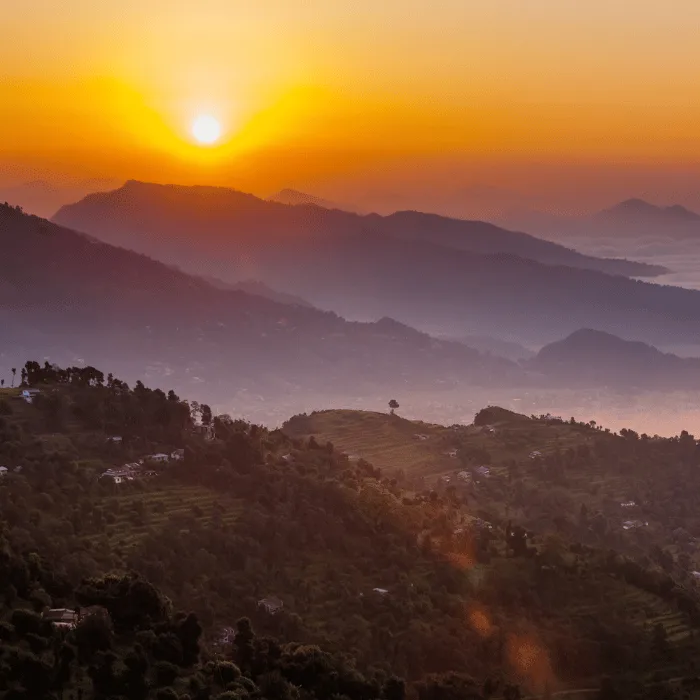
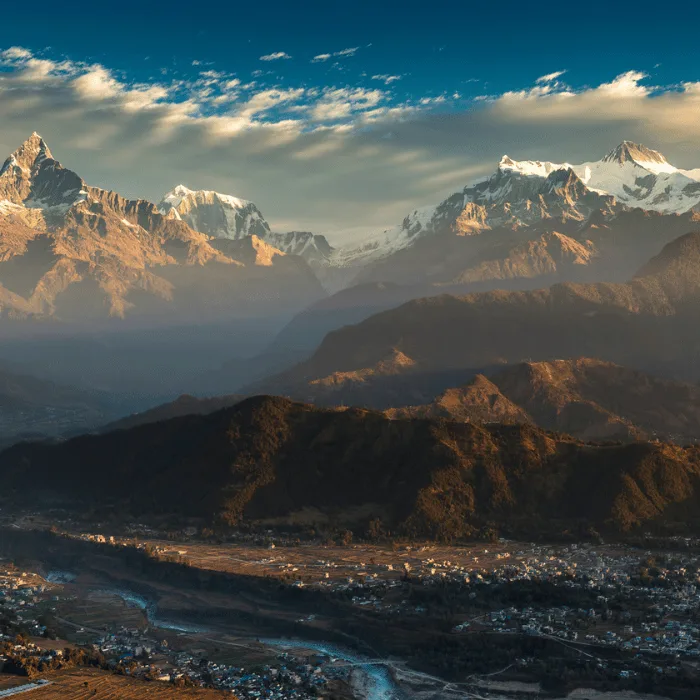
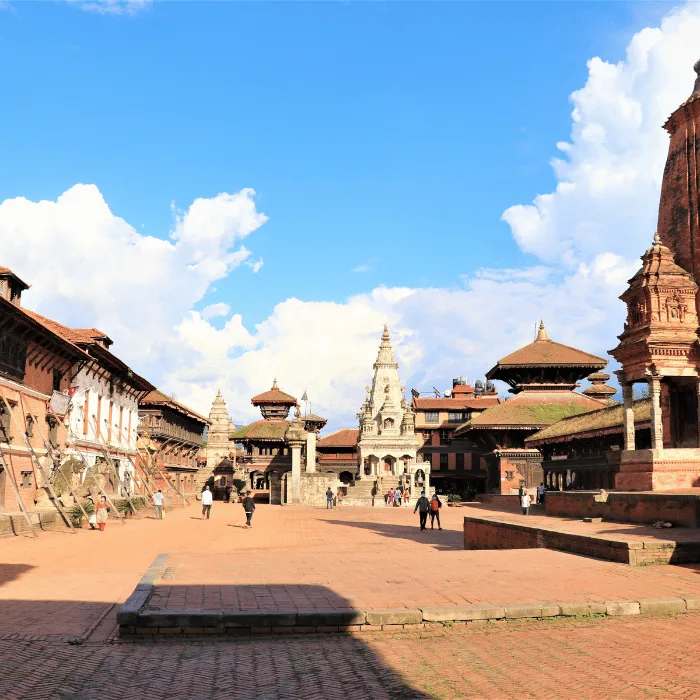


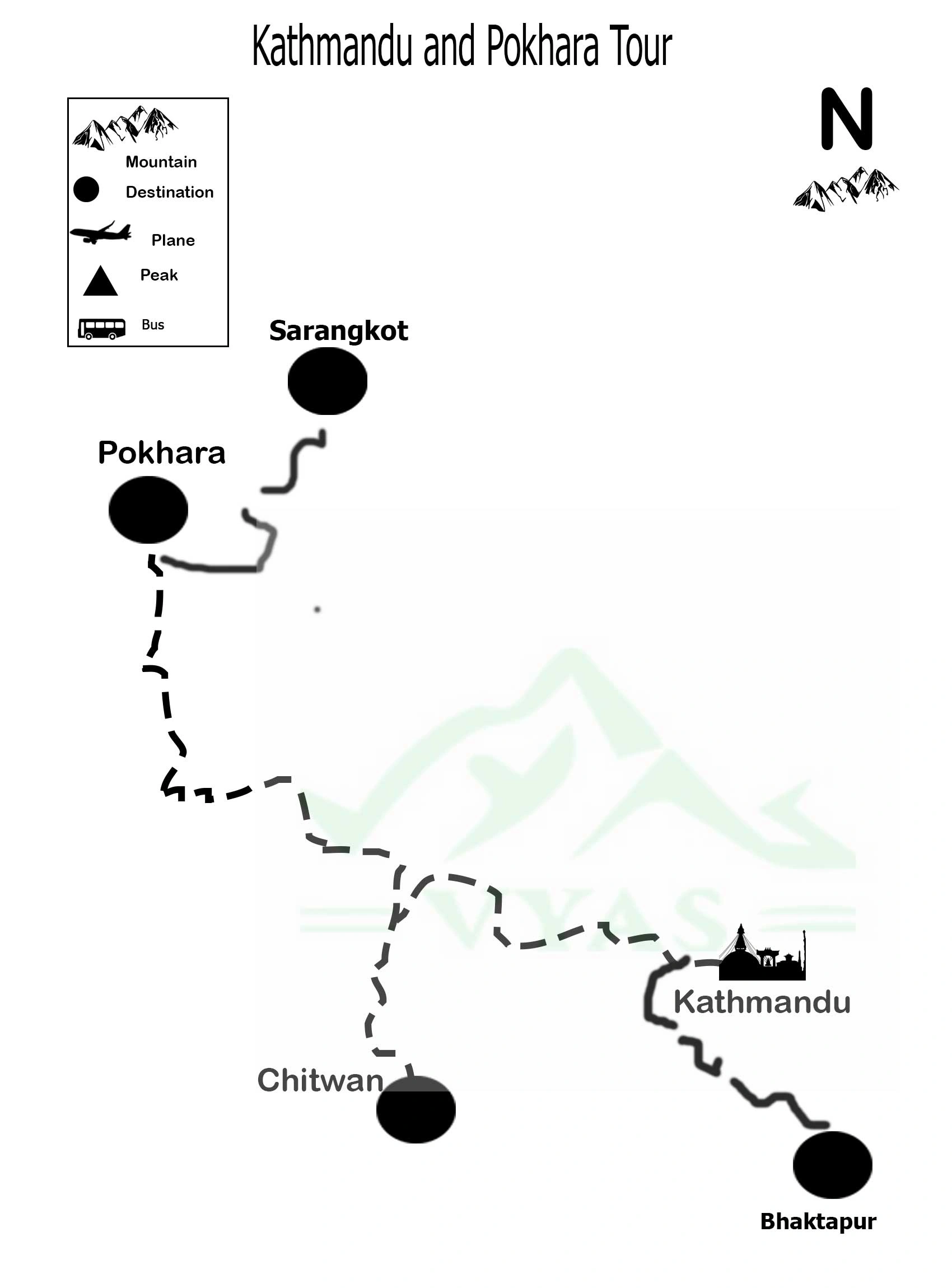


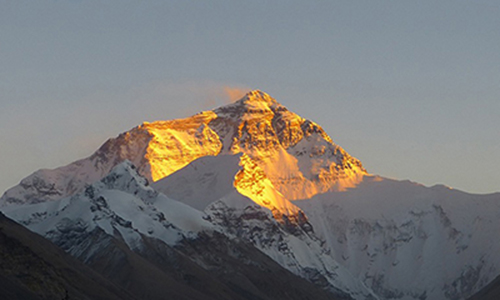
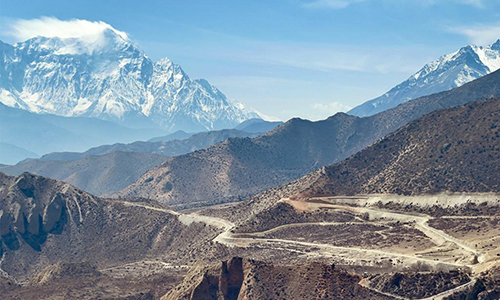
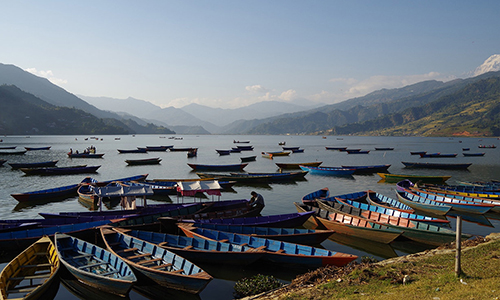
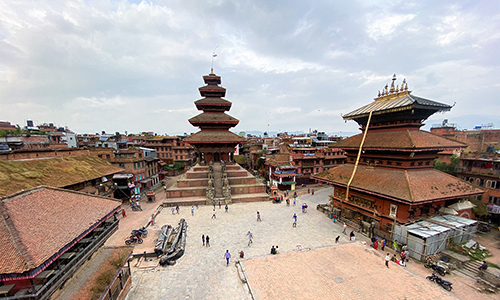
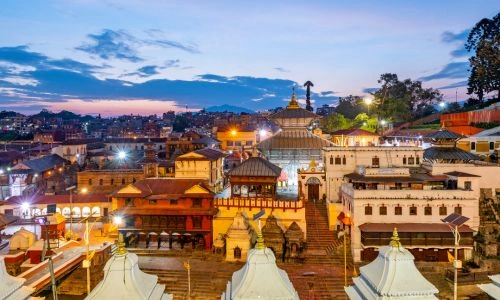
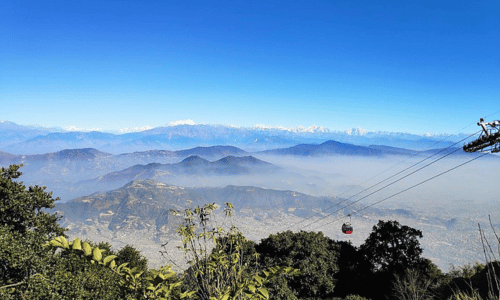
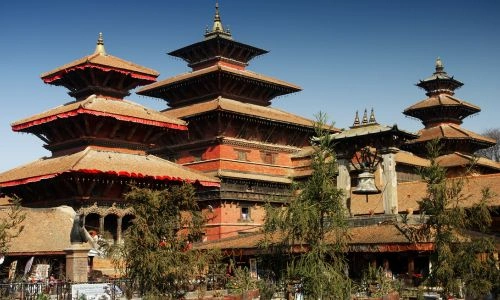
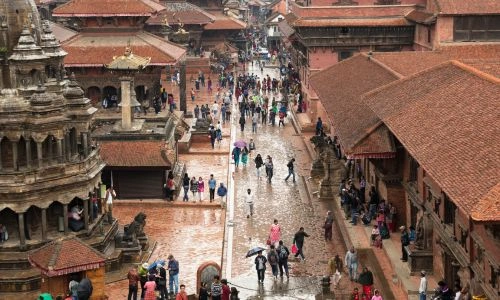

Katherine Adams
2025-06-16 14:25:56
The 7-day Grand Himalayan Journey with Vyas Trek Nepal was a dream come true! From the vibrant streets of Kathmandu to the peaceful sunrise in Sarangkot and the timeless charm of Bhaktapur, every day was packed with beauty and culture. The luxury hotels and seamless service made it a truly premium experience.